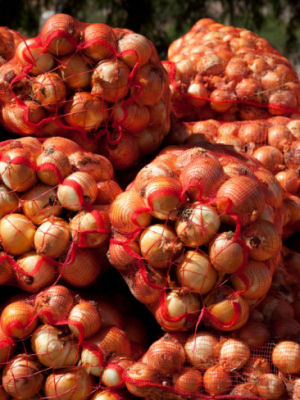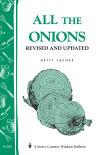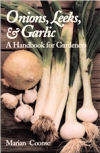
HOME
INTRO
SYMBOLS
ALMANAC
ECONOMY
GEOGRAPHY
STATE MAPS
PEOPLE
FORUM
NEWS
COOL SCHOOLS
STATE QUIZ
STATE LINKS
BOOK STORE
MARKETPLACE
GUESTBOOK
CONTACT US


You may double left-click on a word on this page to retrieve its definition. Tweet Follow
Texas State Vegetable

Texas State Vegetable: Texas Sweet Onion
Photographs, prints, posters
In 1997, nine official designations were approved and at least two went down to defeat (a state sauce and a state molecule).
Yes, there were some winners and some losers in 1997. Picante sauce did not get approved as the official state sauce and the buckminsterfullerene, or "buckyball," fell short of being designated the state molecule. But, there's always next year.
One of the 1997 winners was the Texas sweet onion.
It was proposed as the official state vegetable by Miguel Wise, who filed House Concurrent Resolution No. 148 on March 14, 1997.
Though the proposals for an official sauce and an official molecule fell by the wayside, House Concurrent Resolution No. 148 was approved by both the House and the Senate before the end of April.
H. C. R. No. 148
HOUSE CONCURRENT RESOLUTION
WHEREAS, The State of Texas has traditionally recognized a variety of official state symbols as tangible representations of the proud spirit and heritage of our state; and
WHEREAS, The bluebonnet, the pecan tree, and the mockingbird are just a few examples of specimens that exemplify the great diversity of the Texas landscape, while the red grapefruit, our state fruit, represents yet another aspect of our shared culture; and
WHEREAS, In keeping with this custom, the designation of the Texas sweet onion as the Official State Vegetable of Texas will provide suitable recognition for this outstanding food; and
WHEREAS, The well-known 1015 variation of this onion is recognized by gourmet chefs and culinary experts from around the world for its characteristic sweetness and its inherent properties that inhibit tearing of the eyes; it has been carefully nurtured and perfected over time and is renowned for its exceptional flavor and well-documented nutritive qualities; and
WHEREAS, The Lone Star State's reputation as a global leader in the development of various varietals of vegetables is well deserved, and the creation of the 1015 onion as the first sweet onion in the world has contributed greatly to this proud legacy; and
WHEREAS, The Texas sweet onion is as distinctive as the state from which it originates and it will no doubt serve as a fitting emblem for the bounties of nature with which our state is blessed; now, therefore, be it
RESOLVED, That the 75th Legislature of the State of Texas hereby designate the Texas sweet onion as the Official State Vegetable of Texas and recognize the historic and cultural significance of this native herb.
On May 5, 1997, Governor George W. Bush signed House Concurrent Resolution No. 148 making the Texas sweet onion to official state vegetable of Texas.
The other winners in 1997 were
- Ennis - Official Bluebonnet Trail
- Ennis - Bluebonnet City
- Chappell Hill Bluebonnet Festival - Official Bluebonnet Festival
- Cotton - Official State Fiber and Fabric
- Guitar - Official State Musical Instrument
- Chiltepin - Official State Native Pepper
- Crape myrtle - Official State Shrub
- Rodeo - Official Sport
Texas Law
The Texas sweet onion was named the official vegetable of the State of Texas by House Concurrent Resolution and is not, therefore, listed in the Texas Statutes.
Only a small number of Texas' myriad symbols have been actually adopted by an act of the legislature and written into the Texas Statutes.
Sources...
Wise, Miguel. State of Texas. Texas Legislature. 75(R) History for HCR 148. Austin: , 1997. Web. <http://www.capitol.state.tx.us/BillLookup/History.aspx?LegSess=75R&Bill=HCR148>.
Shearer, Benjamin F. and Barbara S. State Names, Seals, Flags and Symbols: A Historical Guide Third Edition, Revised and Expanded. Westport, Conn: Greenwood Press, 3 Sub edition, 2001.
Additional Information

Texas State Vegetable: Texas Sweet Onion
Photographs, prints, posters
Onion Culture: Texas State Historical Association, The Handbook of Texas Online.
The Onion That Came to Texas but Never Left the Same: History of the Texas Sweet Onions. Texas AgriLife Extension Service, Texas A&M System.
Onions in Texas: Crop Brief on Production, Pests, & Pesticides, prepared by Dr. Dudley Smith, Texas Agricultural Experiment Station and Dr. Juan Anisco, Texas AgriLife Extension Service. Texas AgriLife Extension Service, Texas A&M System.
Serious eats: A Beginner's guide to onions.
Allium L. onion: USDA, NRCS. 2013. The PLANTS Database (http://plants.usda.gov, 26 March 2013). National Plant Data Team, Greensboro, NC 27401-4901 USA..
Allium L.: Integrated Taxonomic Information System (ITIS) Here you will find authoritative taxonomic information on plants, animals, fungi, and microbes of North America and the world.
State vegetables: Complete list of official state vegetables from NETSTATE.COM.
More symbols & emblems: Complete list of official Texas state symbols from NETSTATE.COM.

All the Onions
Betty E. M. Jacobs
All the Onions: Storey's Country Wisdom Bulletin A-204, by Betty E. M. Jacobs. 32 pages. Publisher: Storey Publishing, LLC; Rev Upd edition (January 6, 1999)
Storey's Country Wisdom Bulletins feature 32 pages of practical, hands-on instructions designed to help you master dozens of country living skills quickly and easily.

Onions, Leeks, and Garlic
Marian Coonse
Onions, Leeks, and Garlic: A Handbook for Gardeners, by Marian Coonse. 156 pages. Publisher: Texas A&M University Press; 1st edition (October 1, 1995)
As familiar a kitchen staple as onions, leeks, and garlic are, many gardeners have scores of questions about growing them. How do the species differ? How and when should you plant and harvest them? How hardy are different varieties and how do they adapt to different climates? What insects and diseases attack them, and how can you combat them?
Onions, Leeks, and Garlic: A Handbook for Gardeners offers the first comprehensive, carefully researched source of scientific and practical information for the gardener, professional market grower, supplier, or nursery. It provides a unique guide to members of the Allium family, including complete information on their history and development, families and species, planting, harvesting, disease, and drying and storing. The book describes the many species, subspecies, varieties, forms, and cultivars of onions commonly grown for food, along with their botanical names. Wild onions regarded as common fare on many tables are also discussed.
The Omnivore's Dilemma: A Natural History of Four Meals, by Michael Pollan. 464 pages. Penguin Press HC, The (April 11, 2006) The bestselling author of The Botany of Desire explores the ecology of eating to unveil why we consume what we consume in the twenty-first century
In Defense of Food: An Eater's Manifesto, by Michael Pollan. 256 pages. Penguin Press HC, The (2008) In looking toward traditional diets the world over, as well as the foods our families-and regions-historically enjoyed, we can recover a more balanced, reasonable, and pleasurable approach to food. Michael Pollan's bracing and eloquent manifesto shows us how we might start making thoughtful food choices that will enrich our lives and enlarge our sense of what it means to be healthy.

